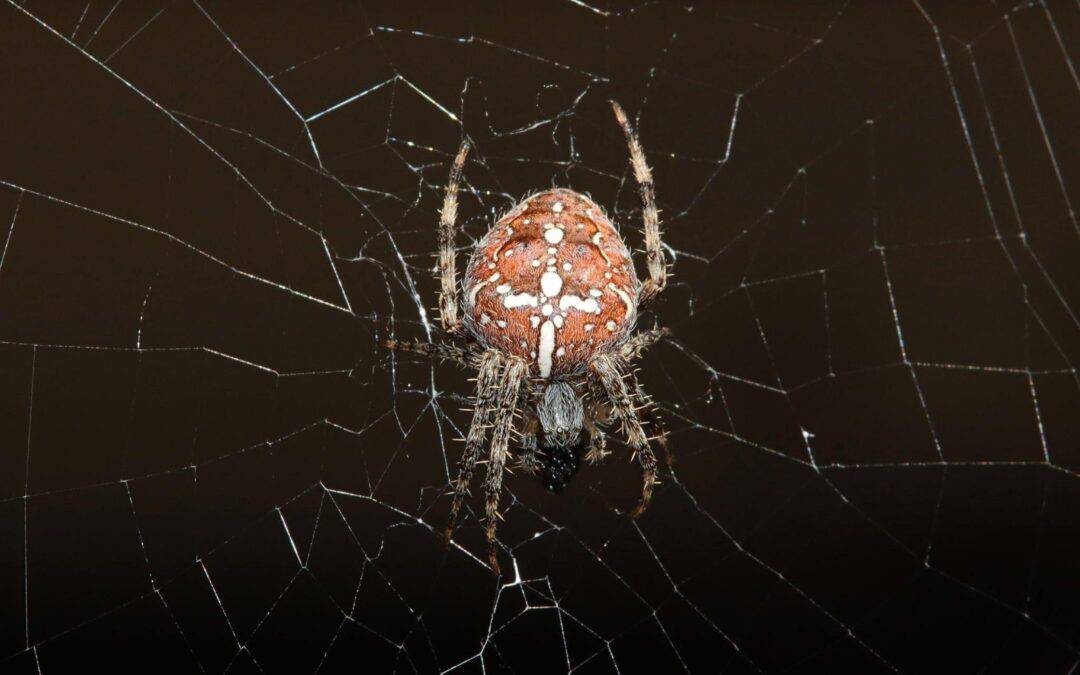Have you ever noticed spiders crawling around your home or webbing in the corner of your ceiling fixtures? Spiders, especially those native to Utah, are a common sight and can be found in various forms all throughout the year. While some types of spiders can be beneficial to have around, it’s important to be aware of possible risks associated with having them in your home.
11 Types of Spiders Native to Utah
Wolf Spiders: Wolf spiders are large, hairy spiders and can reach up to two inches in length. They have stout bodies and long legs, and they may seem somewhat intimidating due to their size. They are active hunters rather than webspinners and generally hunt at night.
House Spiders: These small brown or grayish-brown spiders build cobwebs in the corners of rooms, ceiling fixtures and closets. House spiders typically bite when startled or accidentally touched.
Black Widow Spiders: Black widows are among the most venomous spiders in North America. They have an easily identifiable red hourglass shape on its abdomen and their webs can be found in dark, quiet places such as attics and basements.
Funnel-web Spiders: These ground-dwelling spiders are slender with yellow findings on the legs as well as a black abdomen with white markings near the head region. They build funnel shaped webs that often span from one side of a garden to the other in order to catch their prey.
Orb Weaver Spiders: Orb weavers are commonly found spinning intricate circular webs, hence why they’re called orb weavers! They range anywhere from very small to quite large in size and come in a variety of colors such as yellow, orange, green, brown and black.
Jumping Spiders: Jumping spiders use vision for hunting purposes more than any other type of spider. These playful little critters are easily identified by their big eyes and quick movements; however they rarely bite humans unless provoked or threatened.
Yellow Sac Spiders:These spiders are light yellowish-green in color and have dark spots on their cephalothorax (head section). They feed mostly on other insects like caterpillars but will also consume pollen grains when food is scarce.
Mesh Web Weaver Spiders: Meshweb weavers create complex three dimensional webs made out of a variety of materials such as silk filament, insect parts, mosses and lichens in order to catch their prey like moths or flies.
Ground or Wood Spider: Ground or wood spiders live under logs and stones where they build domed webs with sticky threads radiating outward used to trap its prey like ants or beetles. It hides inside a small case located near the edge of its web during daylight hours waiting for unsuspecting victims to pass by at nightfall.
Cobweb Spider: This large spider can range anywhere from one half inch all the way up to two inches in length including its legs! The cobweb spider creates an intricate web made out of strong sticky silk filaments making it difficult for even larger insects to escape if caught in its webbing tentacles!
Long-legged Cellar Spider: This long-legged cellar spider has thin dark legs that can reach about three quarters of an inch in length with some individual specimens reaching up close to an inch! Its body is usually light tan in color dotted with small yellow spots giving it excellent camouflage against dirt walls which makes it perfect for lurking around cellars waiting for unsuspecting prey!
Reasons Homeowners May See Spiders
There are several reasons why homeowners may encounter spiders in their homes. These include an attractant such as food (insects) being present, damp/moist areas which are preferred habitats for certain species of spiders, and entry points such as cracks/holes in walls or windows which allow for easy access into buildings. Additionally, different types of spiders will thrive given different environmental conditions so it is important to be aware of which species may live near you or inside your house.
Prevention
Homeowners looking to limit encounters with unwanted spider infestations must take preventative measures by eliminating sources that may attract insects (which serve as natural food sources for many species of spider) such as overripe fruit or vegetables left out on countertops overnight and clutter around the house which can provide hiding spots/places to build webs.
Other steps to consider include selecting appropriate materials when cleaning (avoid using bleach which attracts cockroaches, ants, etc.), keeping window seals closed tightly and making sure doors/windows fit snugly against frames where possible to reduce entry points into the home from outside sources.
Furthermore while some natural DIY remedies exist for reducing Spider populations such as spraying a mixture consisting of essential oils (peppermint oil is especially effective), white vinegar and water on webbing surfaces; experienced homeowners can also purchase low-odor insecticide solutions designed specifically for pest control inside residences that come pre-loaded in aerosol cans making it easier than ever for owners who wish to take matters into their own hands without seeking professional help immediately. However, it’s important to know that professional help is available if you simply don’t want to deal with it.
Professional Treatment
Spider problems often require more sophisticated solutions provided by licensed professionals due to certain hazards associated with certain types of spiders like the poisonous Black Widow spider native to Utah or the deep burrowing Wolf Spider (which are both considered hazardous species due weather variance inducing rapid population growth).
It is recommended that these types infestations are handled by certified professionals like My Guy Pest & Lawn who possess the necessary knowledge and tools required for accurately identifying potential risks posed by various household pests including different types of venomous spiders – enabling them to better determine appropriate methods needed for adequately removing them from properties like households safely while minimizing any sort risk posed towards inhabitants residing within.


